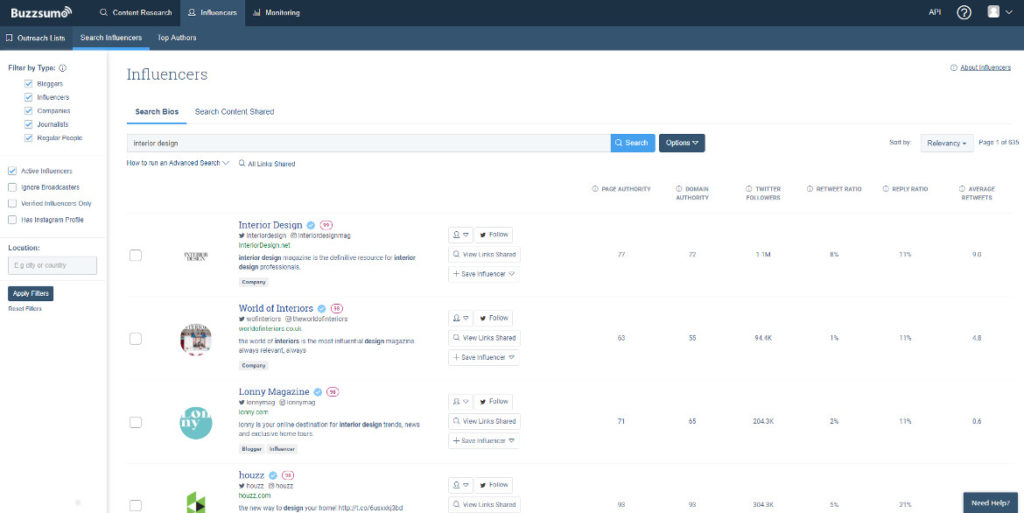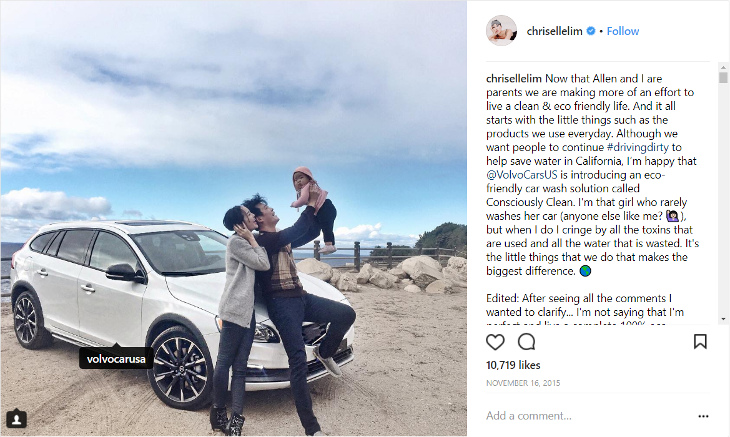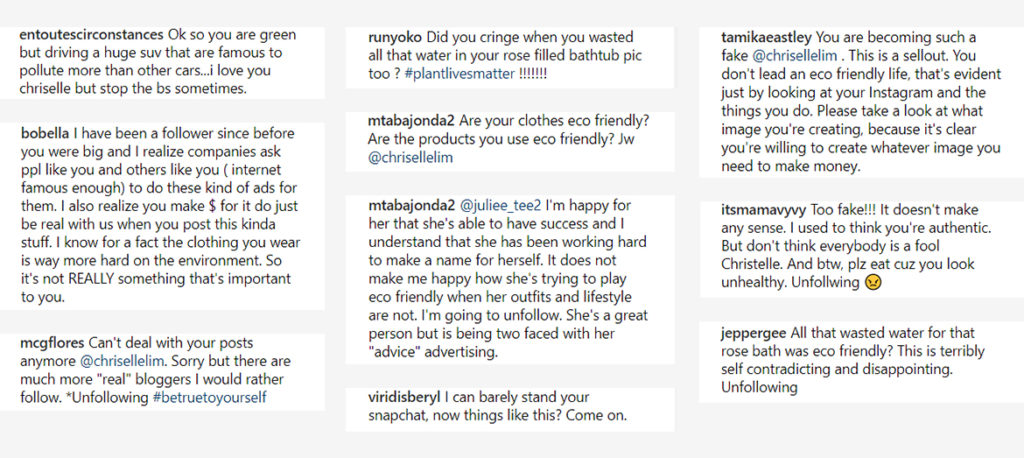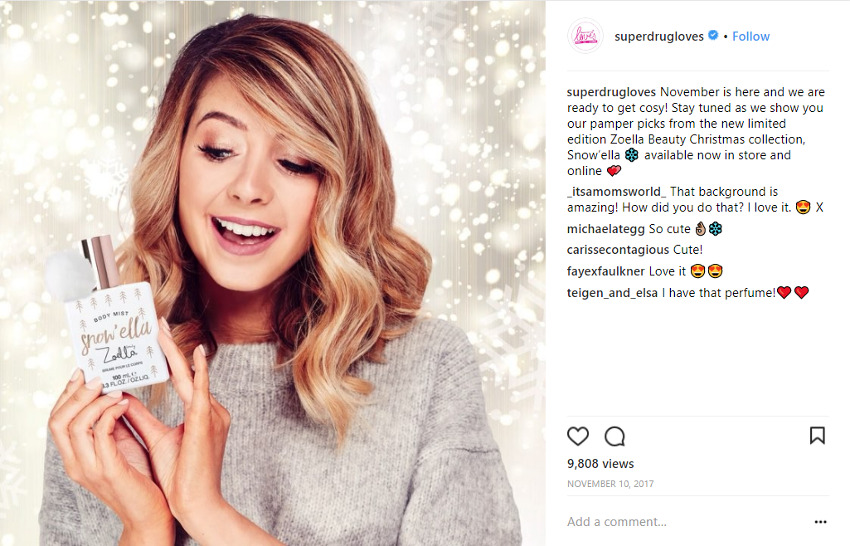Step one – What are the campaign KPIs?
Before developing any campaign, for any channel, you need to define your goals and your budget. Answering each of these questions clearly will help you to do so:
- What are you, or your client, expecting to achieve? E.g. an increase in social followers, revenue, traffic?
- Is this campaign pushing a specific product? Or is this a brand awareness push?
- Do you have a clear timeframe in which you expect this campaign to run?
- How much budget are you allocating?
Once these campaign variables are tied down, we can start thinking about how influencer marketing is going to help you achieve them or, possibly, if influencer marketing is even the best route to take to achieving these goals.
Step two – Who is your audience?
When deciding which influencer(s) you want to work with, whether that’s an influential individual within your niche or a YouTuber with a huge following, you need to consider your brand’s target audience.
Who are they? What do they care about? What types of media do they engage with?
We won’t delve into audience research in depth in this post but digging into these questions helps to define who your brand’s audience is. Using a combination of analytics data and audience research tools will help to build up a full picture. It is often beneficial to develop this research into personas, so they can easily be referred to throughout the process and during planning and brainstorming.
There’s a great resource on Hubspot which details different resources which can be used to conduct effective audience research.
Once these are created, we are clear who is already engaged with your brand. This is when we need to refer to our KPIs: do we want to expand our reach in this audience niche or branch out into a wider demographic? If we want to target a new demographic, then further research is required to understand this prospective audience and create new personas accordingly. It may require a change in messaging to ensure you’re speaking to this audience the right way.
Step three – Which influencers fit the brief?
Once you have established your target audience the aim is to look for the influencers who can best reach them. Within the audience research you will have looked at the types of media your target customers are consuming on a daily, weekly and monthly basis. This enables you to find the right combination of format and influencer for both your audience and your product, making your campaign as effective as possible.
There are several tools you can use to search for key influencers in your niche. Ones that we favour at Builtvisible are BuzzSumo, BuzzStream and Twitter. You can learn about our prospecting process in more detail here.
Both BuzzSumo and BuzzStream enable you to plug in a topic and generate a list of influential people in that niche. These tools are useful for finding influencers directly related to the niche and we can also look deeper at the most shared articles on the topic and find out who is sharing specific types of content to expand the list further.
Twitter is another valuable tool for prospecting. We can look at relevant hashtags to find influencers within the right niche. We can also see whether the influencers we’ve have found have an engaged social following who are liking and sharing their content. This enables us to get more of an idea of their audience to ensure we have found the right influencers. The key is to find influencers who are suitable for your brand and whose audience demographic overlaps with your own audience.

It’s key to base decisions on data as there are often common misconceptions that influencer’s audiences may be of a younger age. A recent study has shown that the share of videos by age ranges was 23% among 18-24-year-olds, 33% by 25-34-year-olds and 24% by 35-44-year-olds. People aged 45-54 watched 12% of videos and those aged over 55 just 8%. If your audience fall outside of the most engaged demographic, then it is likely that you should be looking elsewhere for influencers.
To look at this in more detail we have looked at two examples to showcase how working with different types of influencers has had a positive impact for different brand campaigns and one example which did not have the desired effect.
Campaign example – Volvo
Making the wrong choice of influencer for your campaign can have serious consequences. Indeed, there are many examples of partnerships between influencers and brands which haven’t quite hit the mark. Whether it’s the story created in the partnership or the collaboration looking inauthentic.
Chriselle Lim is a beauty, fashion and lifestyle blogger with one million followers on Instagram. Her content style is focused on inspirational images whilst maintaining a down to earth rapport with her followers.
Chriselle partnered with Volvo, a car manufacturer, to promote their #drivingdirty campaign which aimed to help save water in California and endorsed a Volvo initiative called Consciously Clean.

However, her audience felt the content was overly promotional and the message was not consistent with her usual content. Lots of commenters complained and she edited her original post to address this.

Had Volvo partnered with an influencer with an existing reputation for eco-friendliness, this could have been a far more natural—and successful—collaboration.
The next two examples showcase successful influencer marketing campaigns.
Campaign Example – Industry Experts
Maille created a campaign to promote their mustard product to their key audience of shopping decision makers – i.e. the parents and adults who do the weekly shop. They worked with nine influencers, all specialists in various cuisines. Each influencer was challenged with creating a dish using Maille mustard, which were then sold in their restaurants and cafes over the two-week campaign period. This then culminated in a huge dinner party where these dishes were served. The results spoke for themselves: 200+ pieces of coverage and an 11% increase in retail sale value.
Maille’s aim with this campaign was to show the versatility of their product and promote it to a sophisticated audience. Therefore, despite these influencers having far fewer followers than big-name YouTubers, their audience is much more relevant. Focusing on quality over quantity was the key to those impressive results.
Campaign Example – Influencers
Superdrug is a brand which has really shown the power of YouTuber influence. In a market where they were trailing behind Boots, both in brand history and customer loyalty, they had to change their tactics. Superdrug saw the impact that YouTubers were having on younger consumers and chose to capitalise on this by striking a deal with Zoella Beauty to sell the first iteration of the range in 2014. Since then they have continued to work with Zoella, as well as other influencers such as Tanya Burr and Fleur de Force, to sell their products and collaborate on content. This had led to a 10.4% increase in revenue in 2016 alone.

By following the process we’ve outlined in this article, tying down KPIs and defining your audience, we can ensure that we can find the best influencer for the brief to create a collaboration which will be right for your audience and brand. As we have shown, relevancy and trust are much more important that focusing purely on the size of audience that an influencer has. The examples show that bringing together your target demographic, KPIs and influencer audiences is the key to ensuring you’re working with the right influencers for your campaign.

Bartosz
Very usefull article with many interested tips. Influencer’s is very difficult social group and we must know how to work with them. My problems is always be a fulfillment of KPI.
APJ Smart Works
Thank you very much for great post really it helps me a lot to know more about this topic. I will follow in the future. Thanks for sharing.
John Anderson
A proper strategy is a win win situation for the business growth through Influencer marketer.
Rob
The influencer marketing craze is just starting… it will the marketing of the future for sure!
Farnian
Thank you it was a great article. But I prefer to start a viral campaign by using influencers instead of just giving them some content to publish. I mean, I prefer them to ask their followers to join a contest or something like this.
Go4Marketing
Very useful and clear article. Thanks.
Tori Carlisle
Hi Rob,
I agree! Influencer marketing has changed a lot over the years but still plays a huge part in marketing strategies.
Tori Carlisle
Hey Farnian – I agree there are a lot of ways to work with influencers whether you create content with them, or work with them to gain access to their audience. I think it depends on the type of campaign you’re working on!
APJ Smart Works
Well noted. All your points are very useful. I will share this post to my social media account. Thank you for sharing this impressive post. – motorola mobile service center in ambattur